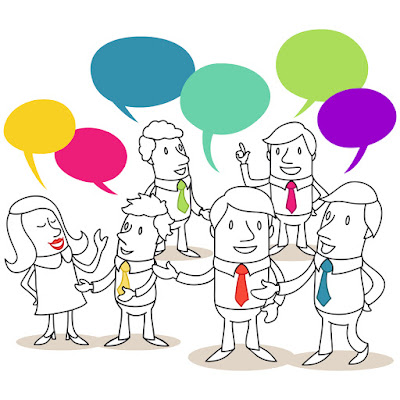One of the sources of angst when you contemplate a high-stakes presentation is the feeling of all eyes upon you and the fear of feeling inadequate, making a foolish mistake or missing the mark. But what if you could think about your upcoming presentation as a conversation rather than a more formal, and thus scary, presentation?
If you could get your audience involved so there is more of a sharing of ideas than a one-sided speech, you will feel more like a facilitator than a performer. And the ultimate benefits will be a better understanding of your core message on the part of your audience and the kind of interaction that brings value to all who participate.
Here, according to best practices of sales presentation training, is how it can work:
• Co-create the draft of your talk with a few members of the intended audience.
This partnership will bring any problems or issues to the fore at the outset, not in the middle of your presentation, so you have time and opportunity to deal with them. Also, by involving key folks in the crafting of your presentation, they will have a sense of “buy-in” and may well predispose their peers to your point of view.
• Send out materials that will help the audience prepare.
Especially if you have a complex idea, it is best to “educate” your audience ahead of time. They will have a chance to consider your findings and point of view. You won’t have to slow down to cover less important details as you deliver your most compelling thoughts.
• Plant a few compatriots in the audience to facilitate questions and answers at the end.
It can help tremendously to have a few folks prepared to help clear up any audience confusion, manage questions, and reiterate or clarify your central theme. When you have concluded your talk, you will need a bit of a break to collect yourself and transition into more of a listening than a speaking mode.
All this preparation is designed to alleviate your stress over the event and to make you more effective at influencing your audience. It will help you focus more on what the audience will take away than what they will think of you. Do all this in the context of conversing and interacting with your audience. Concentrate on a few central points rather than a whole hour-and-a-half of perfect prose. The more conversational the tone, the more your audience will identify with you and your topic.
Learn more at: http://www.lsaglobal.com/sales-communication-sales-presentation-training/

